- Clone
- G25/2 (See other available formats)
- Regulatory Status
- RUO
- Other Names
- C5AR1, C5A, C5AR
- Isotype
- Mouse IgG1, κ
- Ave. Rating
- Submit a Review
- Product Citations
- publications
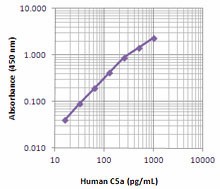
| Cat # | Size | Price | Quantity Check Availability | Save | ||
|---|---|---|---|---|---|---|
| 518305 | 50 µg | 112 CHF | ||||
| 518306 | 500 µg | 347 CHF | ||||
C5, complement component 5, is a protein involved in the complement system. It is cleaved into C5a and C5b by the C3/C5 convertase. The smaller fragment C5a is an anaphylatoxin and is released into the fluid surroundings. C5a is a mediator of local inflammatory process. It induces the contraction of smooth muscle, increases vascular permeability and causes histamine release from mast cells and basophilic leukocytes. C5a also stimulates the locomotion of polymorphonuclear leukocytes (chemokinesis) and direct their migration toward sites of inflammation (chemotaxis). C5a contains 74 amino acids and is rapidly metabolised by a serum enzyme, carboxypeptidase B to a 73 amino acid form, C5a des-Arg. The major fragment C5b binds to the membrane initiating the spontaneous assembly of the late complement components, C5-C9, into the membrane attack complex.
Product DetailsProduct Details
- Verified Reactivity
- Human
- Antibody Type
- Monoclonal
- Host Species
- Mouse
- Immunogen
- Human C5a
- Formulation
- Phosphate-buffered solution, pH 7.2, containing 0.09% sodium azide.
- Preparation
- The antibody was purified by affinity chromatography, and conjugated with biotin under optimal conditions.
- Concentration
- 0.5 mg/ml
- Storage & Handling
- The antibody solution should be stored undiluted between 2°C and 8°C. Do not freeze.
- Application
-
ELISA Detection - Quality tested
WB, IP - Reported in the literature, not verified in house - Recommended Usage
-
Each lot of this antibody is quality control tested by ELISA assay. For ELISA detection applications, a concentration range of 0.25-1 µg/ml is recommended. To obtain a linear standard curve, serial dilutions of C5a recombinant protein ranging from 15.6 to 1000 pg/ml are recommended for each ELISA plate. It is recommended that the reagent be titrated for optimal performance for each application.
- Application Notes
-
The G25/2 antibody can neutralize the bioactivity of natural or recombinant C5a.
Neutralization: The G25/2 antibody can neutralize the bioactivity of natural or recombinant C5a/C5a(desArg)/C5. The LEAF™ purified antibody (Endotoxin <0.1 EU/µg, Azide-Free, 0.2 µm filtered) is recommended for neutralization of human C5a/C5a(desArg)/C5 bioactivity in vivo and in vitro.
ELISA Detection: The biotinylated G25/2 antibody (Cat. No. 518306) is useful as the detection antibody in a sandwich ELISA assay, when used in conjunction with the purified C17/5 antibody as the capture antibody. -
Application References
(PubMed link indicates BioLegend citation) -
- Oppermann M, et al. 1991. Kidney Int. 40:939947.
- Oppermann M, et al. 1992. Immunopharm. 24:119134.
- Elsner J, et al. 1994. Blood 83:3324.
- RRID
-
AB_10900415 (BioLegend Cat. No. 518305)
AB_10896948 (BioLegend Cat. No. 518306)
Antigen Details
- Biology Area
- Cell Biology, Complement, Immunology, Innate Immunity, Neuroinflammation, Neuroscience
- Antigen References
-
1. Lundwall AB, et al. 1985. J. Biol. Chem. 260:2108.
2. Fernandez HN, et al. 1978. J. Biol. Chem. 253:6955.
3. Tack BF, et al. 1979. Biochemistry 18:1490. - Gene ID
- 727 View all products for this Gene ID
- UniProt
- View information about C5a/C5adesArg/C5 on UniProt.org
Related Pages & Pathways
Pages
Related FAQs
- How many biotin molecules are per antibody structure?
- We don't routinely measure the number of biotins with our antibody products but the number of biotin molecules range from 3-6 molecules per antibody.
Other Formats
View All C5a/C5adesArg/C5 Reagents Request Custom Conjugation| Description | Clone | Applications |
|---|---|---|
| Biotin anti-human C5a/C5a(desArg)/C5 | G25/2 | ELISA Detection,WB,IP |
Customers Also Purchased
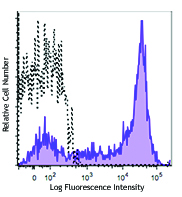
Compare Data Across All Formats
This data display is provided for general comparisons between formats.
Your actual data may vary due to variations in samples, target cells, instruments and their settings, staining conditions, and other factors.
If you need assistance with selecting the best format contact our expert technical support team.
 Login / Register
Login / Register 









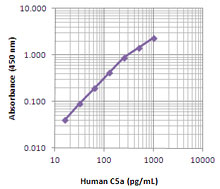
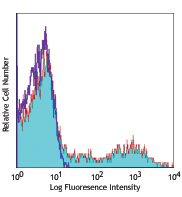
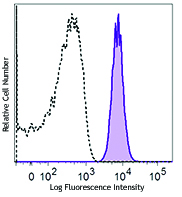
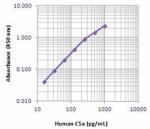



Follow Us